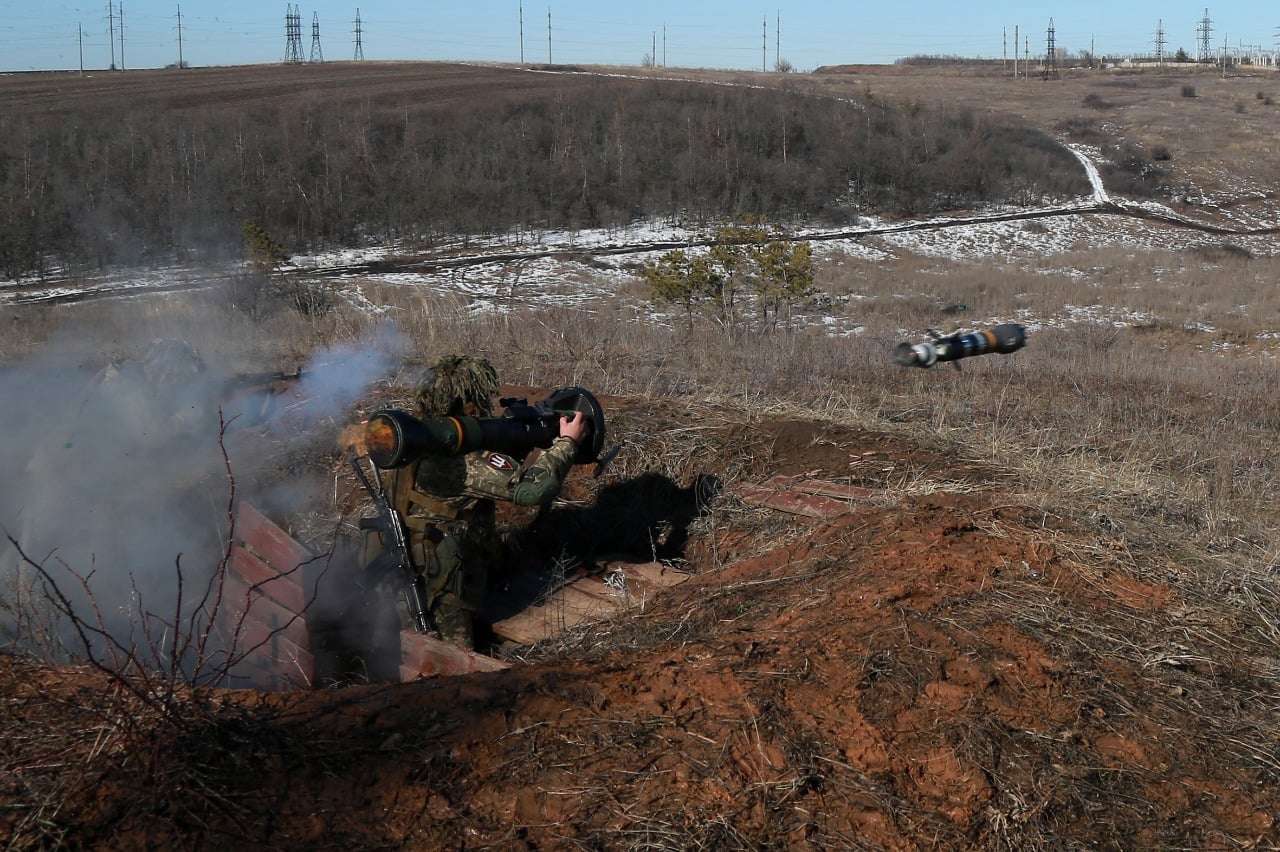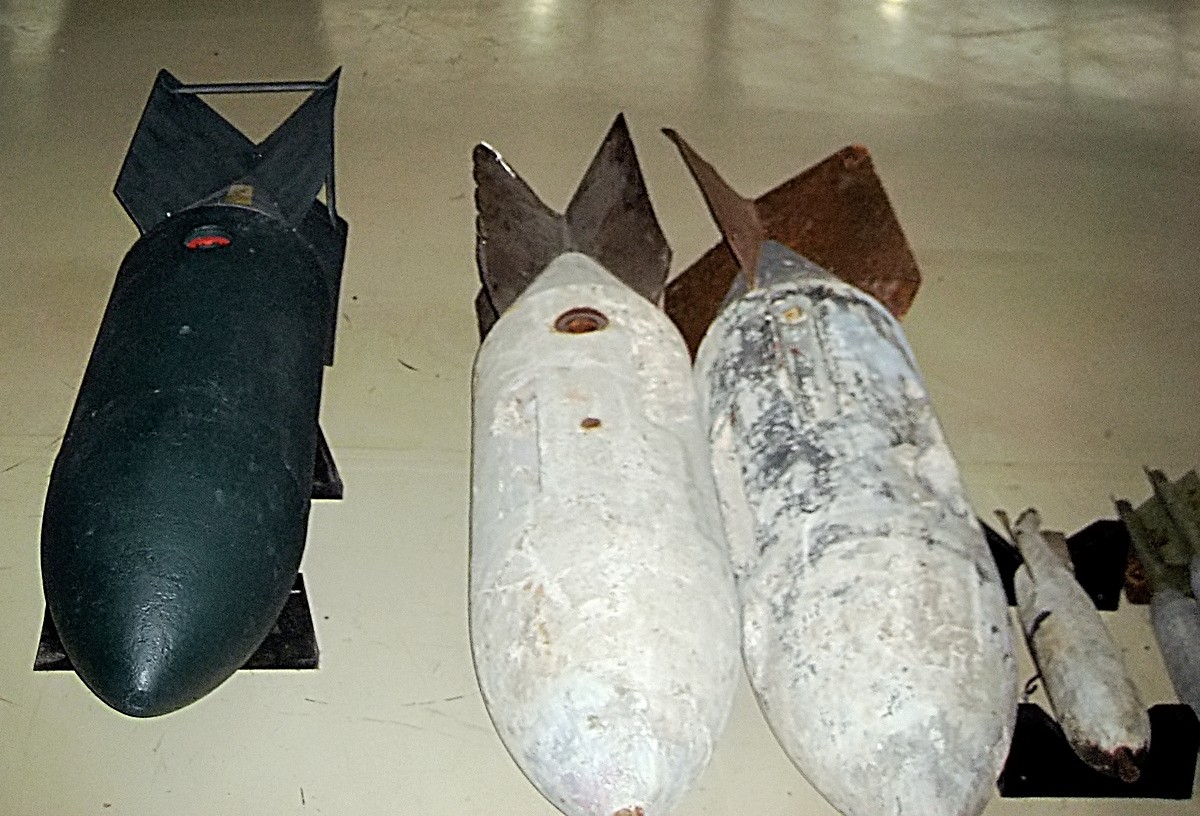|
Top-attack
A top attack weapon is designed to attack armored vehicles from above, to take advantage of the fact that the armour is usually thinnest on the top of an armoured vehicle. The device may be delivered as a smart submunition or a primary munition by an anti-tank guided missile (ATGM), mortar bomb, artillery shell, or even an emplaced munition such as a mine. Top attack munitions use either a shaped charge warhead (often now tandem warheads in order to defeat ERA), or an explosively formed penetrator (EFP) warhead fired while over the target (usually by submunition). The top attack concept was first put into service by the Swedish Armed Forces in 1988 with the Bofors RBS 56 BILL top-attack anti-tank missile. Another method of top attack is the ''overfly top-attack'' (OTA or OFTA) where a missile with a vertically oriented shaped charge jet that fires downwards. A missile is directed to overfly the vehicle where a sensor detects the vehicle, and detonates the shape charge down ... [...More Info...] [...Related Items...] OR: [Wikipedia] [Google] [Baidu] |
HJ-12
The Hongjian-12 () is a third generation, man-portable, fire-and-forget infrared homing Top-attack anti-tank missile of China. It was unveiled at the Eurosatory 2014 exhibition. History The missile was first showcased on the Eurosatory 2014 exhibition. Subsequent modifications and improvements were showcased in the following exhibitions. At Airshow China 2016, China North Industries Corporation (Norinco) unveiled HJ-12E, the export variant with new control fins and rocket motors. On 25 March 2020, Norinco announced its first successful export order to Algeria. In July 2021, the HJ-12 was incorporated into People's Liberation Army Ground Force service. The PLA service version is likely based on the latest HJ-12E variant. Design The HJ-12 is a modern, third generation anti-tank missile developed by Norinco. The HJ-12 is a fire-and-forget system utilising lock-on before launch (LOBL) and is capable of being fired within buildings and bunkers due to its soft launch system ... [...More Info...] [...Related Items...] OR: [Wikipedia] [Google] [Baidu] |
Anti-tank Guided Missile
An anti-tank guided missile (ATGM), anti-tank missile, anti-tank guided weapon (ATGW) or anti-armor guided weapon is a guided missile primarily designed to hit and destroy heavily armored military vehicles. ATGMs range in size from shoulder-launched weapons, which can be transported by a single soldier, to larger tripod-mounted weapons, which require a squad or team to transport and fire, to vehicle and aircraft mounted missile systems. Earlier man-portable anti-tank weapons, like anti-tank rifles and magnetic anti-tank mines, generally had very short range, sometimes on the order of metres or tens of metres. Rocket-propelled high-explosive anti-tank (HEAT) systems appeared in World War II and extended range to the order of hundreds of metres, but accuracy was low and hitting targets at these ranges was largely a matter of luck. It was the combination of rocket propulsion and remote wire guidance that made the ATGM much more effective than these earlier weapons, and ga ... [...More Info...] [...Related Items...] OR: [Wikipedia] [Google] [Baidu] |
ATGM
An anti-tank guided missile (ATGM), anti-tank missile, anti-tank guided weapon (ATGW) or anti-armor guided weapon is a guided missile primarily designed to hit and destroy heavily armored military vehicles. ATGMs range in size from shoulder-launched weapons, which can be transported by a single soldier, to larger tripod-mounted weapons, which require a squad or team to transport and fire, to vehicle and aircraft mounted missile systems. Earlier man-portable anti-tank weapons, like anti-tank rifles and magnetic anti-tank mines, generally had very short range, sometimes on the order of metres or tens of metres. Rocket-propelled high-explosive anti-tank (HEAT) systems appeared in World War II and extended range to the order of hundreds of metres, but accuracy was low and hitting targets at these ranges was largely a matter of luck. It was the combination of rocket propulsion and remote wire guidance that made the ATGM much more effective than these earlier weapons, and gave ... [...More Info...] [...Related Items...] OR: [Wikipedia] [Google] [Baidu] |
Armoured Fighting Vehicle
An armoured fighting vehicle (British English) or armored fighting vehicle (American English) (AFV) is an armed combat vehicle protected by vehicle armour, armour, generally combining operational mobility with Offensive (military), offensive and defense (military), defensive capabilities. AFVs can be wheeled or Continuous track, tracked. Examples of AFVs are tanks, armored car (military), armoured cars, assault guns, Self-propelled artillery, self-propelled artilleries, infantry fighting vehicles (IFV), and armoured personnel carriers (APC). Armoured fighting vehicles are classified according to their characteristics and intended role on the battlefield. The classifications are not absolute; two countries may classify the same vehicle differently, and the criteria change over time. For example, relatively lightly armed armoured personnel carriers were largely superseded by infantry fighting vehicles with much heavier armament in a similar role. Successful designs are often ada ... [...More Info...] [...Related Items...] OR: [Wikipedia] [Google] [Baidu] |
Laser-guided Bomb
A laser-guided bomb (LGB) is a guided bomb that uses semi-active laser guidance to strike a designated target with greater accuracy than an unguided bomb. First developed by the United States during the Vietnam War, laser-guided bombs quickly proved their value in precision strikes of difficult point targets. These weapons use on-board electronics to track targets that are designated by laser, typically in the infrared spectrum, and adjust their glide path to accurately strike the target. Since the weapon is tracking a light signature, not the object itself, the target must be illuminated from a separate source, either by ground forces, by a pod on the attacking aircraft, or by a separate support aircraft. Data from the 28,000 laser guided bombs dropped in Vietnam showed that laser-guided bombs achieved direct hits nearly 50% of the time, despite the laser having to be aimed out the side window of the back seat of another aircraft in flight. Unguided bombs had an accuracy rate of ... [...More Info...] [...Related Items...] OR: [Wikipedia] [Google] [Baidu] |
Griffin LGB
The Griffin Laser Guided Bomb (Griffin LGB) is a laser-guided bomb system made by Israel Aerospace Industries' MBT missile division. It is an add-on kit which is used to retrofit existing Mark 82, Mark 83, and Mark 84 and other unguided bombs, making them into laser-guided smart bombs (with the option of GPS guidance). Initial development completed in 1990. The Griffin conversion kit consists of a front "seeker" section and a set of steerable tailplanes. The resulting guided munition features "trajectory shaping", which allows the bomb to fall along a variety of trajectories – from a shallow angle to a vertical top attack profile. IAI claims this gives the weapon a circular error probable of 5 metres. IAI (which is owned by the Government of Israel) has sold Griffin to the Israeli Defense Forces, the Colombian Air Force, and the Indian Air Force; the system may also have been trialled by the South African Air Force. The IDF used Griffins in 1988 to attack Palestinian ta ... [...More Info...] [...Related Items...] OR: [Wikipedia] [Google] [Baidu] |
FGM-148 Javelin
The FGM-148 Javelin, or Advanced Anti-Tank Weapon System-Medium (AAWS-M), is an American-made man-portable anti-tank system in service since 1996 and continuously upgraded. It replaced the M47 Dragon anti-tank missile in US service. Its fire-and-forget design features automatic infrared guidance, allowing the user to seek cover immediately after launch, in contrast to Wire-guided missile, wire-guided systems like the system used by the Dragon, which require a user to guide the weapon throughout the engagement. The Javelin's high-explosive anti-tank (HEAT) warhead can defeat modern tanks by top attack, top-down attack, hitting them from above, where their armor is thinnest, and is useful against fortifications in a direct attack flight. The Javelin uses a tandem charge warhead to circumvent an enemy tank's explosive reactive armor (ERA), which would normally render HEAT warheads ineffective. , according to claims by the manufacturer, the Javelin had been used in around five thousand ... [...More Info...] [...Related Items...] OR: [Wikipedia] [Google] [Baidu] |
Cluster Bomb
A cluster munition is a form of air-dropped or ground-launched explosive weapon that releases or ejects smaller submunitions. Commonly, this is a cluster bomb that ejects explosive bomblets that are designed to kill personnel and destroy vehicles. Other cluster munitions are designed to destroy runways or electric power transmission lines. Because cluster bombs release many small bomblets over a wide area, they pose risks to civilians both during attacks and afterwards. Unexploded ordnance, Unexploded bomblets can kill or maim civilians and unintended targets long after a conflict has ended, and are costly to locate and remove. This failure rate ranges from 2 percent to over 40 percent. Cluster munitions are prohibited for those nations that ratified the Convention on Cluster Munitions, adopted in Dublin, Ireland, in May 2008. The Convention entered into force and became binding international law upon ratifying states on 1 August 2010, six months after being ratified by 30 st ... [...More Info...] [...Related Items...] OR: [Wikipedia] [Google] [Baidu] |
CBU-97 Sensor Fuzed Weapon
The CBU-97 Sensor Fuzed Weapon is a United States Air Force -class freefall Cluster Bomb Unit. It was developed and produced by Textron Defense Systems. A CBU-97 used in conjunction with the Wind Corrected Munitions Dispenser guidance tail kit is converted to a precision-guided weapon, and the combination is designated CBU-105. Overview The CBU-97 consists of an SUU-66/B tactical munition dispenser that contains 10 BLU-108 submunitions. Each submunition contains four hockey-puck-shaped sensor-fused projectiles called Skeets. These detect target vehicles, such as tanks, armored personnel carriers, trucks and other support vehicles, and fire an explosively-formed penetrator downwards at them. Operation The 40 Skeets scan an area of using infrared and laser sensors, seeking targets by pattern-matching. When a Skeet finds a target it fires an explosively-formed penetrator to destroy it. If a Skeet fails to find a target, it self-destructs above the ground; if this fails, a b ... [...More Info...] [...Related Items...] OR: [Wikipedia] [Google] [Baidu] |
Aerial Bomb
An aerial bomb is a type of Explosive weapon, explosive or Incendiary device, incendiary weapon intended to travel through the Atmosphere of Earth, air on a predictable trajectory. Engineers usually develop such bombs to be dropped from an aircraft. The use of aerial bombs is termed aerial bombing. Bomb types Aerial bombs include a vast range and complexity of designs. These include unguided Unguided bomb, gravity bombs, guided bombs, bombs hand-tossed from a vehicle, bombs needing a large specially-built delivery-vehicle, bombs integrated with the vehicle itself (such as a glide bomb), instant-detonation bombs, or delay-action bombs. As with other types of explosive weapons, aerial bombs aim to kill and injure people or to destroy materiel through the projection of one or more of blast, fragmentation, radiation or fire outwards from the point of detonation. Early bombs The first bombs delivered to their targets by air were single bombs carried on unmanned Incendiary ballo ... [...More Info...] [...Related Items...] OR: [Wikipedia] [Google] [Baidu] |
BLU-108
The BLU-108 is an air-delivered submunition, containing four further smart "Skeet" warheads. The system is manufactured by Textron Systems Weapon & Sensor Systems since 1992. The BLU-108 is released from a munitions dispenser, with a parachute being used to slow its descent. It then fires the four rapidly rotating skeets, which use multi-mode optical sensors to identify a variety of targets ranging from tanks and missile launchers to railway locomotives and stationary aircraft. When the skeet passes over what it considers a high priority target (this priority can be changed prior to employment), it fires a 0.9 kg (2 lb) explosively formed penetrator providing armor-piercing and incendiary effects, as well as a fragmentation ring meant to damage any soft targets, primarily enemy personnel, in the immediate vicinity of the target. BLU-108/B specifications * Length: 78.8 cm (31.0 in) * Diameter: 13.3 cm (5.25 in) * Maximum lateral dimension: 18.4 cm (7.25&n ... [...More Info...] [...Related Items...] OR: [Wikipedia] [Google] [Baidu] |







